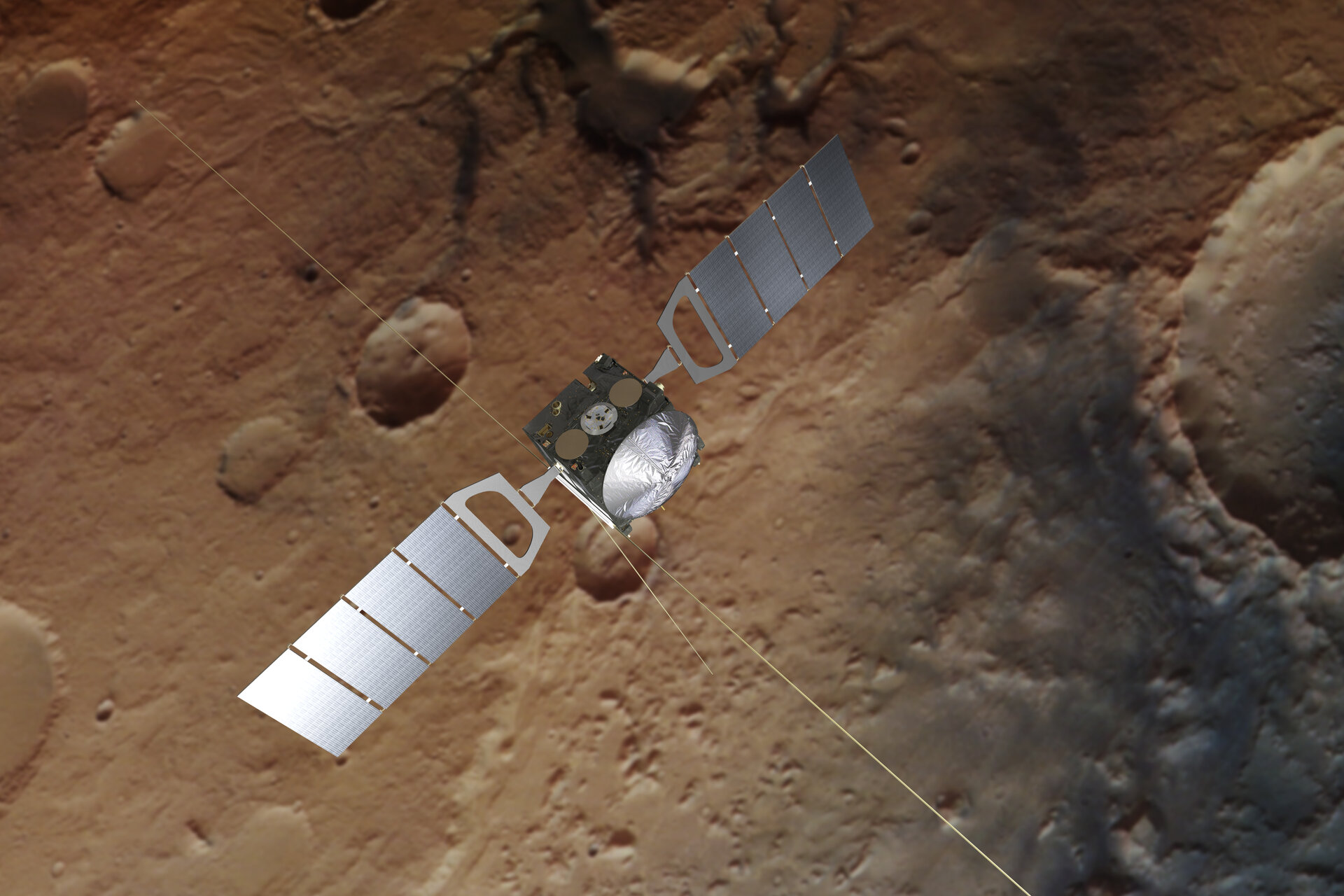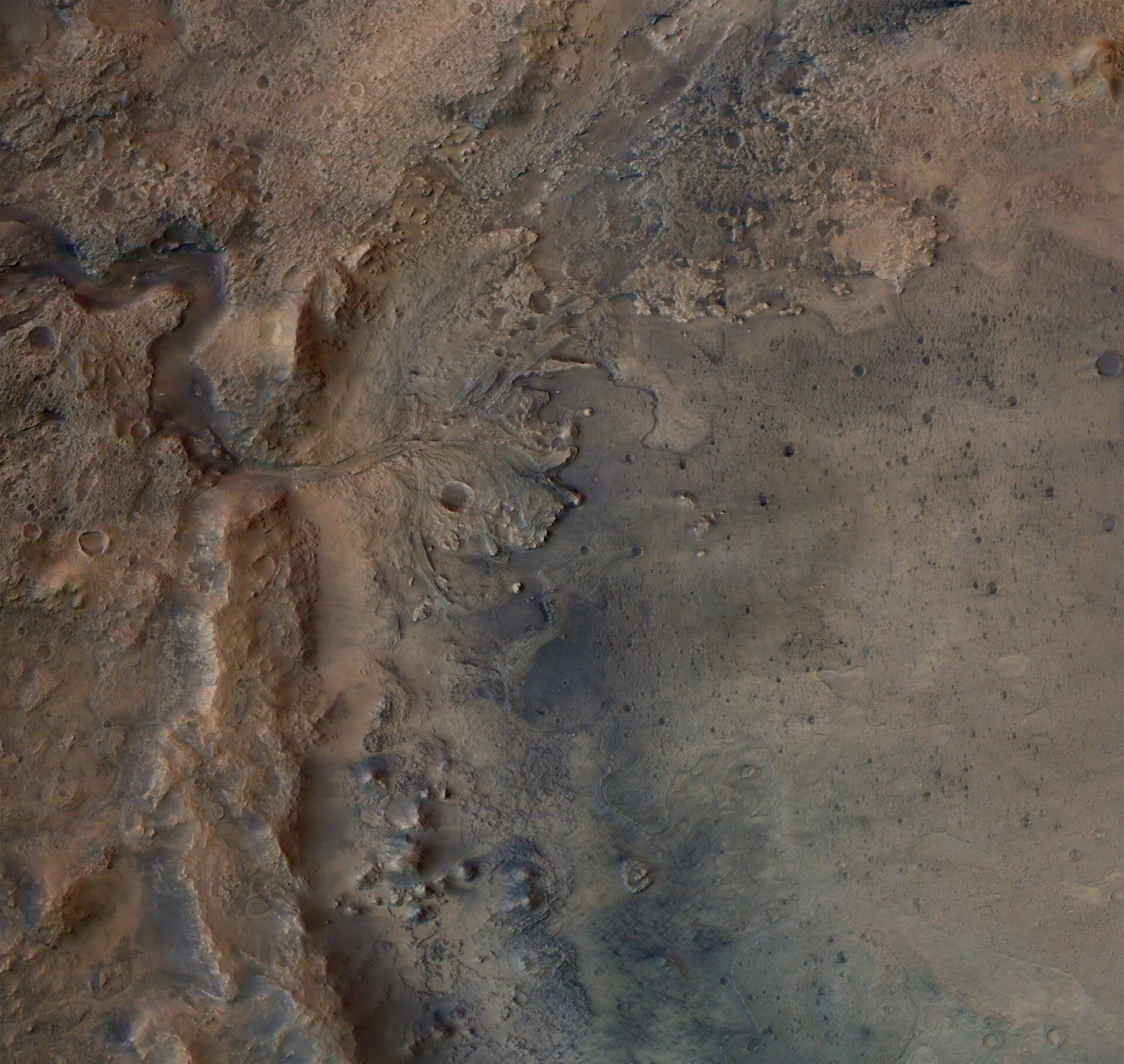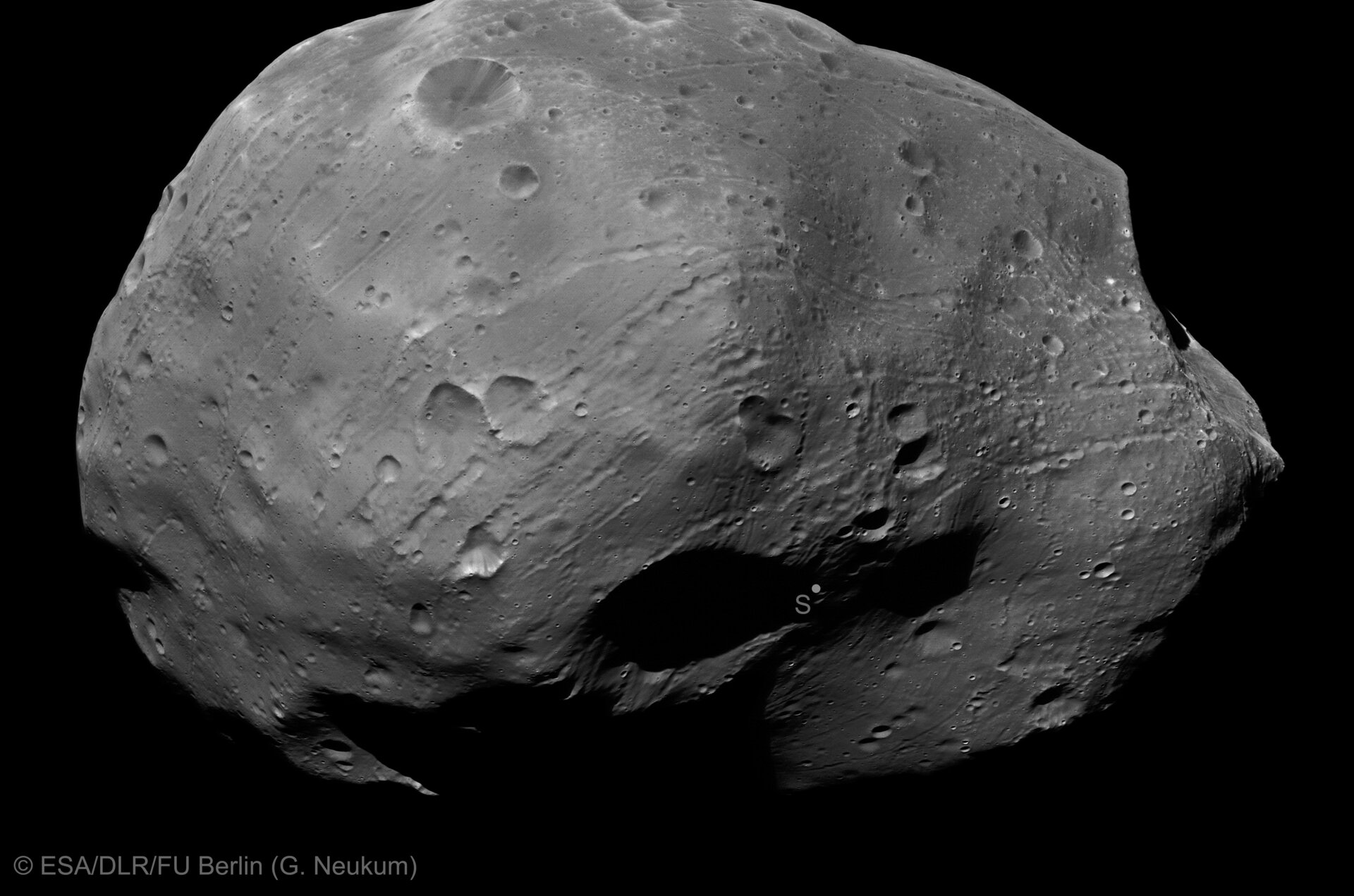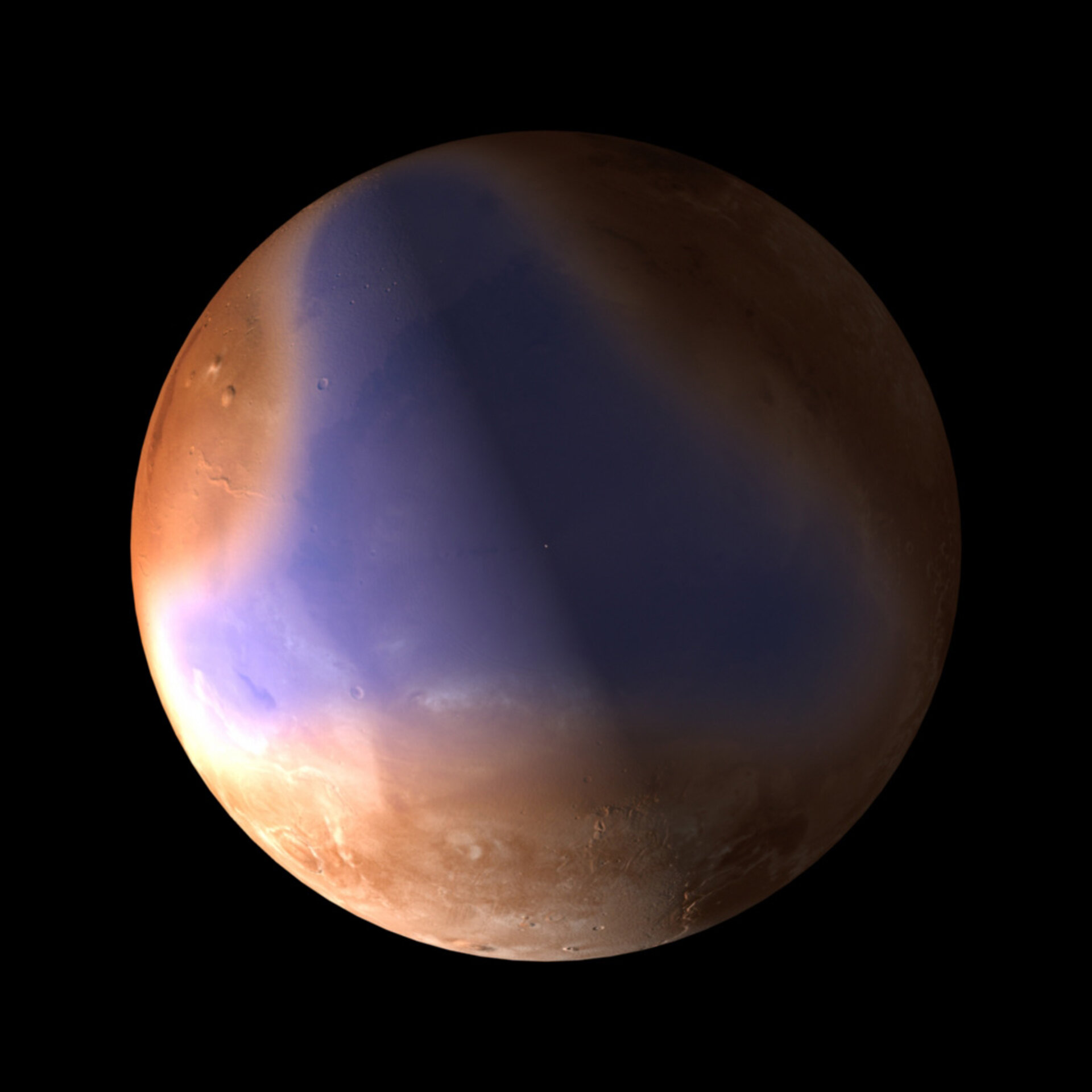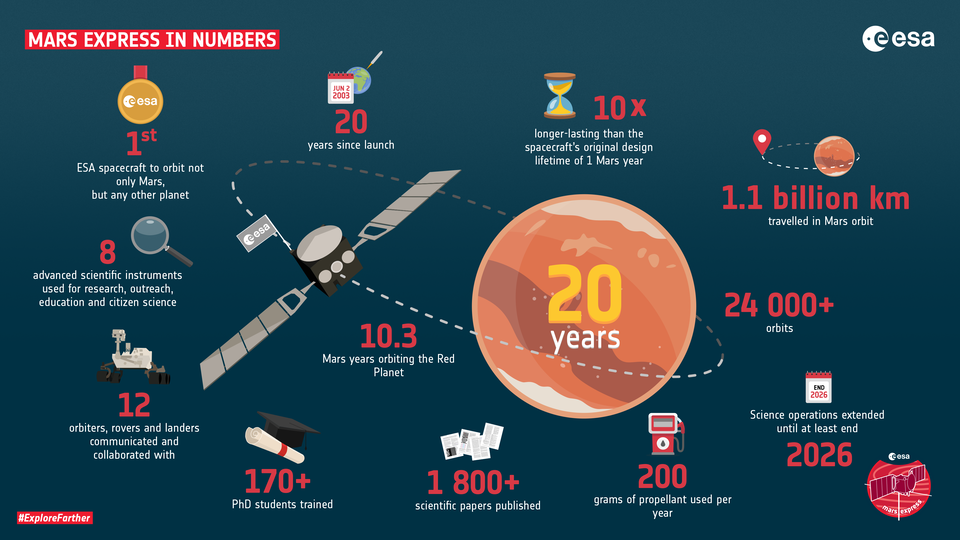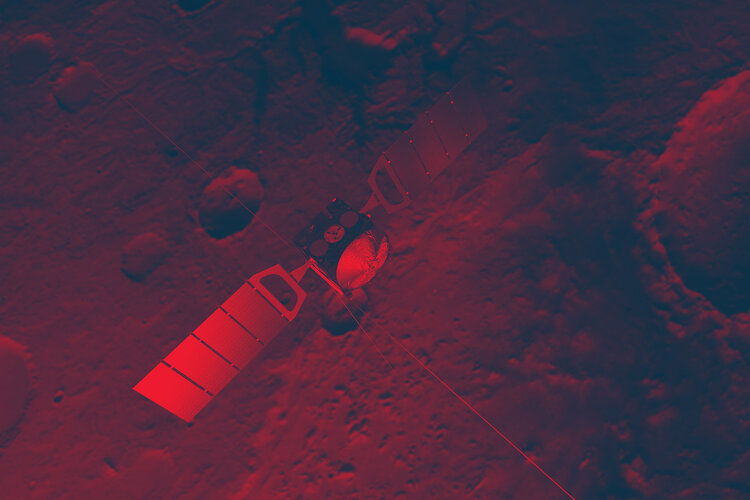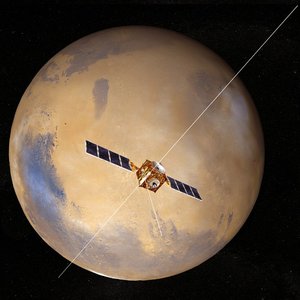Mars Express overview
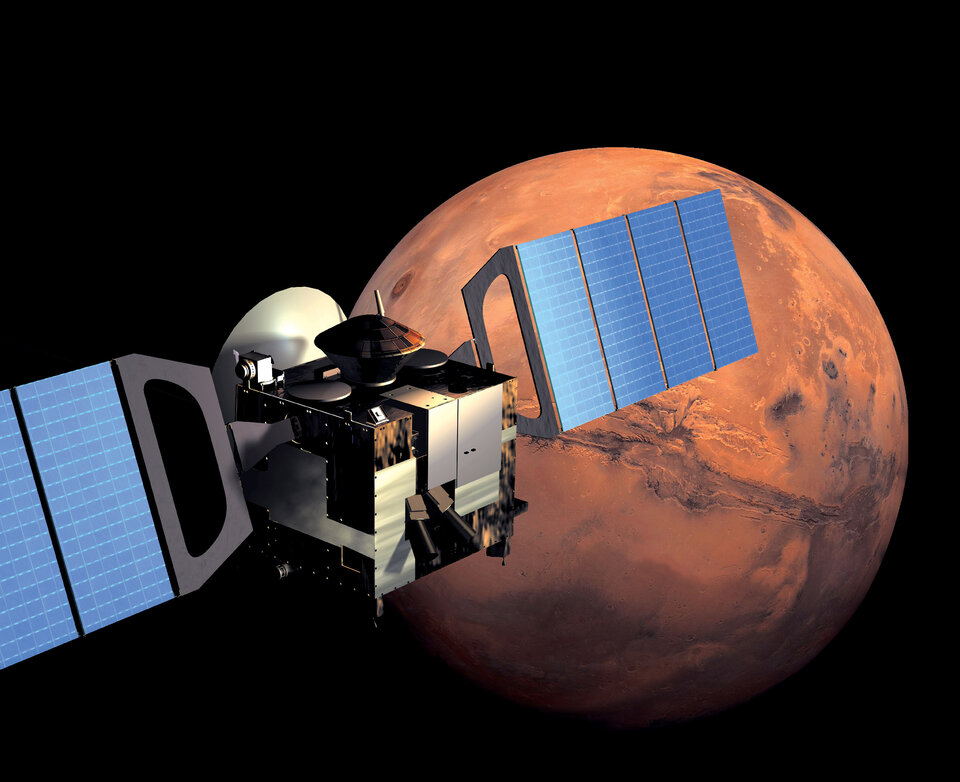
Launch: 2 June 2003 (on a Soyuz/Fregat launcher at Baikonur, Kazakhstan).
Status: In operation around Mars
Objective
To study the martian atmosphere and climate, the planet’s structure, its mineralogy and its geology, and to search for traces of water.
Mission
Mars Express is Europe’s first mission to the Red Planet. It carries eight instruments and deployed a lander, Beagle 2. The lander was lost during its attempt to reach the planet’s surface but the orbiter continues its highly successful on-going global investigation of Mars and its two moons, Phobos and Deimos.
The main goals of Mars Express include:
- imaging the entire surface of Mars at high resolution (10 metres/pixel) and selected areas at super resolution (2 metres/pixel)
- producing a map of the mineral composition of the surface at 100 metre resolution
- mapping the composition of the atmosphere and determining its global circulation
- determining the structure of the sub-surface to a depth of a few kilometres
- determining the effect of the atmosphere on the surface
- determining the interaction of the atmosphere with the solar wind
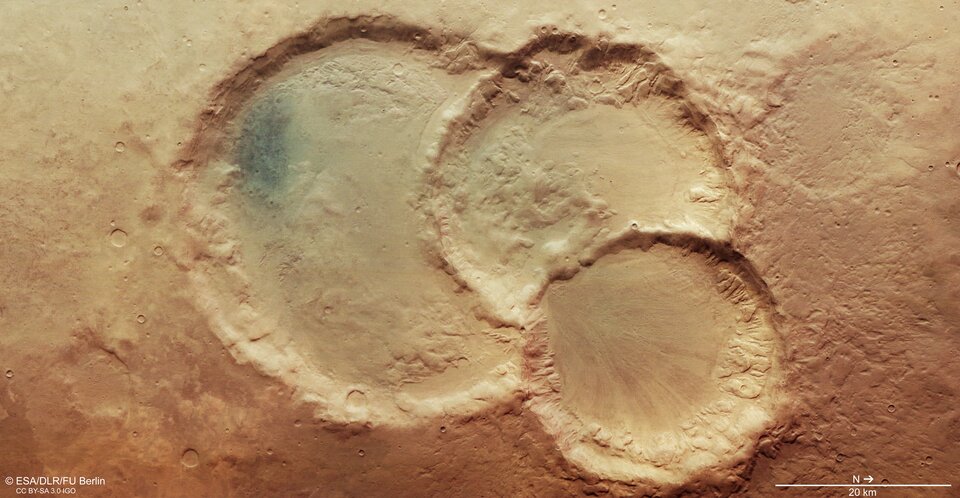
What's special?
Mars has always been a source of intrigue and fascination. It is currently the only planet in the Solar System on which there is a strong possibility of finding the evidence of past life, perhaps even existing organisms. It is also a prime candidate for future manned exploration.
Since beginning science operations in 2004, the mission has already provided countless breath-taking views of Mars in three dimensions. It has traced the history of water across the globe, demonstrating that Mars once harboured environmental conditions that may have been suitable for life. Key discoveries include the presence of minerals that form only in the presence of water, the detection of water-ice deposits underground, and evidence to suggest volcanism on Mars may have persisted until recent times.
The mission has also mapped the how key gases such as water and ozone vary throughout the atmosphere, and tracked how dust gets lifted from the surface and distributed through the atmosphere.
Furthermore, Mars Express has studied Mars’ innermost moon Phobos in unprecedented detail.
The spacecraft has also provided relay communication services between the Earth and the NASA rovers on the surface, so forming a centrepiece of the international effort in exploring Mars.
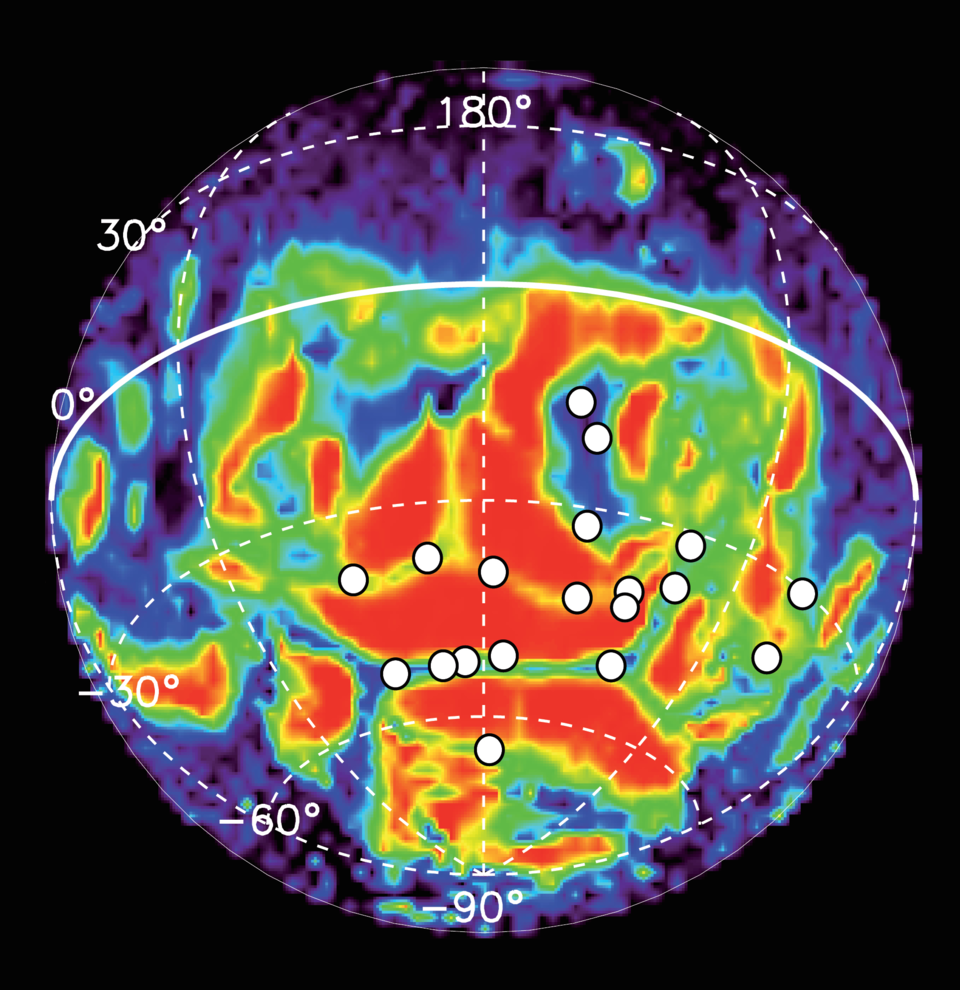
Spacecraft
Mars Express hosts eight scientific instruments: HRSC (High Resolution Stereo Camera, OMEGA (Visible and Infrared Mineralogical Mapping Spectrometer) and MARSIS (Sub-surface Sounding Radar Altimeter) are used to image and study the surface and subsurface. For atmospheric and plasma studies there is PFS (Planetary Fourier Spectrometer), SPICAM (Ultraviolet and Infrared Atmospheric Spectrometer), ASPERA (Energetic Neutral Atoms Analyser) and VMC (Visual Monitoring Camera). OMEGA is also used to the study the atmosphere, and plasma is also studied with MARSIS. The radio link that conveys data between the spacecraft and Earth is also used by MaRS, the Mars Radio Science Experiment, to study the gravity of Mars, the atmosphere and ionosphere, surface roughness and solar corona.
Electrical power is provided by the spacecraft’s solar panels, which are mounted on a rotating drive mechanism, which tilts them forwards and backwards to catch the most sunlight. When the spacecraft's view of the Sun is obscured during a solar eclipse, an innovative lithium-ion battery, previously charged up by the solar panels, takes over.
Journey
Mars Express launched from the Baikonur launch pad in Kazakhstan on a Soyuz-Fregat launcher on 2 June 2003. This date was chosen in part because on 27 August 2003, Mars made its closest approach to Earth in 17 years.
One month before arriving at Mars, preparations began for the separation of the Beagle 2 lander. Beagle 2 was released on 19 December 2003, just six days before Mars Express went into orbit around the Red Planet.
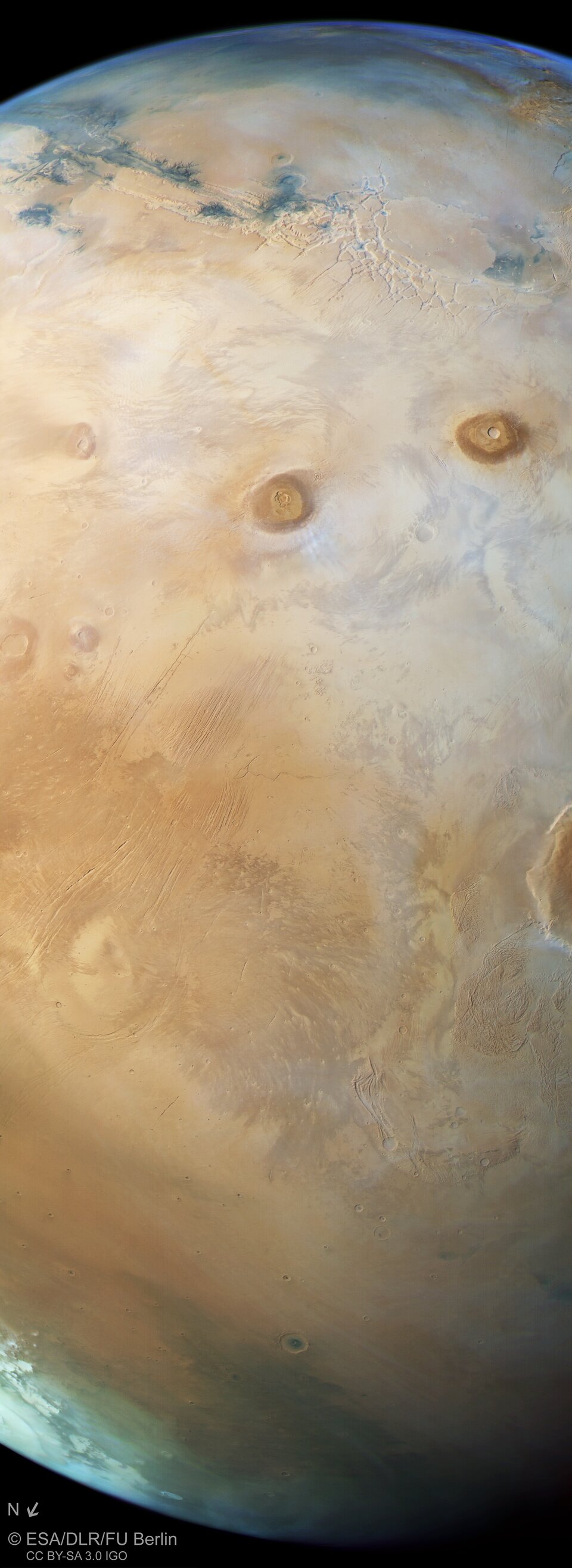
The rocky ride through the Martian atmosphere to the surface should have taken no longer than ten minutes. The NASA Mars Odyssey orbiter, several Earth-based telescopes and Mars Express itself all tried to make contact with Beagle 2; however no signal was received. The Beagle 2 Management Board met in London on 6 February 2004 and, following an assessment of the situation, declared Beagle 2 lost. However, in 2015, the lost lander was found in images taken by NASA’s Mars Reconnaissance Orbiter.
Mars Express successfully entered orbit around Mars on 25 December 2003.
History
Mars Express is so called because it was built and launched in record time and at a much lower cost than previous, similar missions into outer space. The experience gained on Mars Express led to the Venus Express mission.
The relatively low cost of the mission was achieved through new and innovative approaches in the working relationship between ESA, industry, national agencies and the scientific community, and through the reuse of equipment developed for ESA’s Rosetta mission. Some of the scientific instruments have a heritage from the Russian Mars 1996 mission.
Beagle 2 was named after the ship in which Charles Darwin sailed when formulating his ideas about evolution.
Partnerships
Astrium SAS of Toulouse, France, was the prime contractor for Mars Express, leading a consortium of 24 companies from 15 European countries and the US. The Soyuz-Fregat launcher was provided by Starsem, which is jointly owned by Arianespace, Aerospatiale, the Russian Aviation and Space Agency and the Samara Space Centre.















 Germany
Germany
 Austria
Austria
 Belgium
Belgium
 Denmark
Denmark
 Spain
Spain
 Estonia
Estonia
 Finland
Finland
 France
France
 Greece
Greece
 Hungary
Hungary
 Ireland
Ireland
 Italy
Italy
 Luxembourg
Luxembourg
 Norway
Norway
 The Netherlands
The Netherlands
 Poland
Poland
 Portugal
Portugal
 Czechia
Czechia
 Romania
Romania
 United Kingdom
United Kingdom
 Slovenia
Slovenia
 Sweden
Sweden
 Switzerland
Switzerland


























